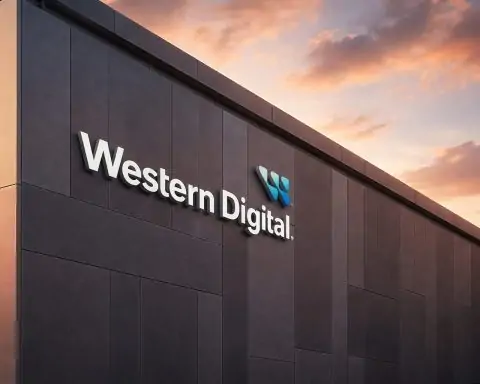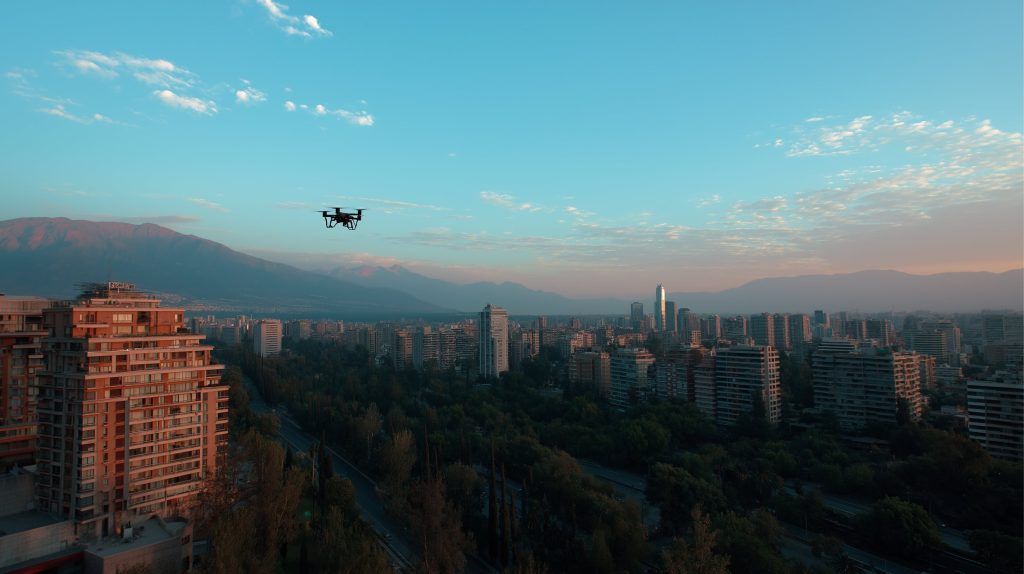- By 2023 Laos had laid over 98,500 kilometers of fiber-optic cable and operates 18 international transmission lines interconnecting with Thailand, Vietnam, Cambodia, Myanmar, and China.
- Mobile signal reaches 97% of villages nationwide, covering 8,245 villages across 18 provinces.
- As of late 2024, 2G coverage reached 97% of the population, 3G covered 85%, and 4G/LTE about 78%.
- 5G networks have been introduced on a limited scale, initially launched in Vientiane and a handful of major provinces.
- Unitel has over 5 million subscribers and roughly 50% of Laos’s mobile market share.
- LaoTel (Lao Telecom) has around one-third market share and over 3 million subscribers, with 2024 revenues of about LAK 2.4 trillion (USD ~130 million).
- TPlus has roughly 10% market share and about 1 million subscribers, while ETL has about 5% market share.
- In early 2024 Laos had 6.8 million mobile connections, representing about 88.5% of the population.
- By 2025 average fixed broadband speeds reached around 33 Mbps, with FTTH in Vientiane and other cities offering 10–20 Mbps plans at roughly $30–$50 per month.
- Starlink is planned to launch service in Laos in 2025, OneWeb signed a 2023 distribution deal with mu Space to cover Laos, and LaoSat-1 was launched in 2015 to provide satellite capacity.
Current State of Internet Infrastructure in Laos
Laos has significantly expanded its telecommunications infrastructure in recent years. By 2023, the country had laid over 98,500 kilometers of fiber-optic cable, vastly extending network coverage into remote areas [1]. As a landlocked nation, Laos relies on cross-border fiber links for global connectivity, and it now operates 18 international transmission lines interconnecting with Thailand, Vietnam, Cambodia, Myanmar, and China [2]. These fiber backbones support both fixed broadband (e.g. fiber-to-the-home) and mobile network backhaul, forming the foundation of internet access nationwide.
On the wireless side, mobile broadband coverage now reaches the vast majority of the population. Mobile signal service is available in 97% of villages nationwide, spanning 8,245 villages across all 18 provinces [3]. Cellular networks have rapidly modernized: as of late 2024, 2G coverage was 97% of the population, 3G covered 85%, and 4G/LTE about 78% [4]. 5G networks have been introduced on a limited scale – initially launched in Vientiane (the capital) and a handful of major provinces – marking a new milestone in high-speed wireless connectivity [5]. Public Wi-Fi hotspots are mostly concentrated in urban centers (e.g. cafes, hotels in Vientiane and other cities), whereas in rural areas internet access is almost entirely via cellular networks.
Fixed-line broadband infrastructure, though expanding, remains relatively limited in scope. The state-run operator Lao Telecom has rolled out FTTH (fiber-to-the-home) services across the country’s cities and towns [6], enabling high-speed home internet for those in range. However, legacy DSL and copper networks were never widespread in Laos, so fixed broadband adoption started from a very low base. Most households, especially in rural districts, still rely on mobile data rather than wired home internet. Nonetheless, ongoing fiber deployment is improving the fixed broadband footprint gradually, and by 2025 average fixed broadband speeds reached around 33 Mbps, a 16.5% increase from the previous year as new fiber links came online [7] [8].
International connectivity for Laos is achieved via the fiber-optic links to neighboring countries, which provide access to submarine cable gateways. The completion of 18 cross-border links has greatly improved the resiliency and capacity of Laos’s internet – reducing latency and increasing available bandwidth for users nationwide [9]. In short, Laos’s internet infrastructure in 2025 consists of a robust fiber-optic backbone connected to regional networks, extensive 3G/4G mobile coverage (with 5G emerging), and growing last-mile fiber broadband in urban areas. This represents a dramatic improvement in coverage compared to a decade ago, though challenges remain in reaching the most remote villages with high-speed access.
Key Internet Service Providers and Market Share
The telecommunications market in Laos is served by five main operators as of 2024 [10]. These include four major mobile network operators and a smaller state-affiliated provider. The largest operator is Unitel, a joint venture between Lao Asia Telecom and Vietnam’s Viettel, which holds roughly half of the mobile market share [11]. Unitel has over 5 million subscribers and is known for having the widest network coverage in the country [12] [13]. The second largest is Lao Telecommunications (Lao Telecom or LaoTel) – the oldest telecom company in Laos – with around one-third of the market and over 3 million subscribers [14] [15]. Lao Telecom is partly government-owned and provides a full range of services (mobile 2G/3G/4G/5G, fixed broadband, and enterprise services). In 2024, Lao Telecom alone reported revenues of about LAK 2.4 trillion (USD ~$130 million) [16], reflecting its substantial role in the sector.
The other two notable mobile ISPs are TPlus and ETL. TPlus (formerly known as Beeline Laos under VimpelCom) has roughly 10% market share and about 1 million subscribers [17] [18]. TPlus was rebranded and modernized in recent years and continues to offer mobile voice/data services, targeting youth and budget-conscious customers. ETL (Enterprise of Telecommunications Lao) is a smaller state-owned operator with around 5% market share [19]. ETL provides mobile services and some fixed-line offerings, though it struggles to compete with the larger players on coverage and scale [20].
In addition to these, a fifth operator – sometimes identified as a state network provider – also contributes to the telecom sector’s revenues [21]. For instance, Sky Telecom (a state company) and private ISPs like Planet Online Laos specialize in fixed broadband, enterprise connections, and ISP services. However, the bulk of consumer internet access is through the four mobile carriers (Unitel, LaoTel, TPlus, ETL).
Market revenues reflect the dominance of the top providers. In 2024, the telecom sector’s five operators collectively generated over LAK 5 trillion (USD $231 million) in revenue and paid about LAK 391 billion ($18 million) in taxes [22]. Unitel and Lao Telecom likely account for the lion’s share of these revenues. Competition in the Lao ISP market has driven improvements in network quality and the introduction of new services (like 4.5G/5G and fiber broadband), although the two largest providers still hold an effective duopoly in many areas.
Overall, Lao consumers have a choice of multiple providers, but Unitel and Lao Telecom remain the dominant players, especially for mobile internet. Smaller ISPs like TPlus and ETL provide alternatives and often compete on price or niche offerings (such as TPlus’s focus on urban mobile data users and ETL’s government client base). The presence of several operators has helped spur network expansion – for example, Unitel and LaoTel both invested heavily in rural towers and fiber backhaul to vie for new subscribers, thus extending coverage to nearly all populated areas.
Types of Internet Access: Fixed, Mobile, and Satellite
Like most of Southeast Asia, Laos’s internet access is primarily mobile-based. Mobile broadband (3G/4G/LTE) is by far the most common way Laotians go online, thanks to widespread cellphone ownership and the difficulty of deploying fixed lines in rugged terrain. By early 2024, Laos had 6.8 million mobile connections, equivalent to 88.5% of the population [23]. Importantly, 93% of those mobile connections are on 3G, 4G, or 5G networks (as opposed to older 2G), enabling broadband internet speeds for the vast majority of users [24]. Most people access the internet through smartphones using mobile data plans. The rollout of 4G over the last five years and recent pilot 5G services in cities have significantly improved mobile internet speeds and capacity nationwide.
Fixed broadband access (such as home fiber or DSL) remains a smaller slice of the market, but it is growing in urban centers. Lao Telecom and Unitel offer fiber-to-the-home (FTTH) in Vientiane and other major towns, providing high-speed unlimited internet to households and businesses. These fixed broadband subscriptions are popular with enterprises, government offices, and urban professionals who require more bandwidth or reliable connections for offices, Wi-Fi networks, and streaming. However, fixed broadband penetration is still very low in Laos – as of a few years ago, less than 2% of households had a fixed home internet subscription [25]. While that figure has likely increased with new fiber deployments, the vast majority of Lao households still do not have wired internet. Instead, many urban dwellers rely on mobile hotspots or phone tethering for home use, and in rural areas fixed lines are nearly nonexistent. The government and operators have identified expanding fixed broadband as a priority (to improve network quality and reduce congestion on mobile networks), and ongoing investments in fiber infrastructure reflect this aim [26] [27].
Satellite internet is emerging as a complement to Laos’s terrestrial networks, especially for remote regions. Traditionally, satellite connectivity in Laos was limited to specific VSAT installations (e.g. for remote government offices or villages beyond the reach of cell towers) and was very costly. Laos even launched its own satellite (LaoSat-1 in 2015) in partnership with China, which provides C-band and Ku-band coverage over Laos and neighboring countries [28]. LaoSat-1 is mainly used for telecom backhaul, television broadcasting, and some government communications, but it laid the groundwork for domestic satellite services. In terms of consumer-facing satellite internet, the landscape is changing rapidly with new low-Earth orbit (LEO) satellite constellations.
Starlink, SpaceX’s satellite internet service, is poised to enter the Lao market. As of early 2025, Starlink was not yet officially available in Laos, but the company has indicated that coverage is set to launch in Laos by 2025 [29]. Once operational, Starlink’s constellation of low-orbit satellites could deliver high-speed internet to even the most isolated corners of Laos – an attractive prospect for rural communities, remote businesses, and travelers. Regulatory approval will be key; neighboring countries like Vietnam and Cambodia have been cautious, but Laos may see Starlink as a way to leapfrog traditional infrastructure in hard-to-reach areas.
Another LEO provider, OneWeb, is also making inroads. In 2023 OneWeb signed a multi-year distribution deal with regional firm mu Space to cover mainland Southeast Asia (including Laos) with LEO satellite broadband solutions [30]. Under this partnership, OneWeb’s service will be available to enterprises and government projects in Laos, targeting remote communities, maritime connectivity, and mobile backhaul where terrestrial networks are absent [31]. These satellite options (Starlink, OneWeb, and similar) can provide tens of Mbps of speed with relatively low latency, which would be revolutionary for Laos’s rural villages on mountaintops or deep in jungles.
Satellite internet, however, comes with higher costs for equipment and subscriptions, so it may initially be used by businesses, government, or affluent users rather than the general populace. Nonetheless, the arrival of satellite broadband in Laos – combined with nearly ubiquitous mobile coverage – means the country will have a mix of access technologies. By 2025, an Internet user in Laos might be connected via fiber in the city, 4G/5G on their smartphone, or a satellite dish in an off-grid area. This multi-platform access ecosystem improves redundancy and coverage, inching Laos closer to universal internet availability.
Urban vs. Rural Access
Geography and population distribution play a major role in Laos’s digital divide. Around 62% of Laos’s population lives in rural areas (often in mountainous terrain) [32], and historically these regions have lagged in connectivity. The urban centers – Vientiane, Luang Prabang, Savannakhet, Pakse, and a few other towns – enjoy the best internet infrastructure. In cities, residents benefit from strong 4G signals, the first 5G pilot zones, dense mobile tower coverage, and options for fiber broadband or public Wi-Fi. By contrast, many rural villages until recently had only basic 2G voice service or no coverage at all.
This gap has narrowed considerably due to aggressive network expansion. By the end of 2023, the government reported that 97% of all villages now have at least some mobile service coverage [33]. This means even very remote hamlets typically get a 2G or 3G signal, enabling basic internet (at least via slow connections) and phone service. Furthermore, the push to extend 4G to more districts means that many rural users can now access mobile broadband where only voice/text was available a few years ago. The number of villages with 4G coverage continues to grow as operators install additional base stations and upgrade older equipment.
Despite near-universal coverage on paper, rural users still face challenges in practice. Network quality outside urban areas can be patchy – mountainous terrain and sparse populations mean some village networks are weak or frequently congested. Rural internet speeds tend to be lower, since remote towers may only have microwave backhaul or older 3G technology. Additionally, electricity and backhaul infrastructure can be less reliable in rural Laos, affecting consistent uptime of cell towers. Affordability is another barrier: while mobile data plans in Laos are cheap in absolute terms, even a $2–$5 monthly package [34] can strain the budget of a poor farming family, limiting regular internet use.
The urban-rural divide is also evident in digital literacy and device access. Urban residents are more likely to own smartphones, computers, and multiple internet-connected devices, whereas in rural villages a household might share a single basic smartphone among members. A 2021 study noted that as of the late 2010s, less than 20% of people in rural Laos had ever used the internet, and only 0.3% of rural households had home broadband [35] [36]. These figures have improved as mobile penetration rose, but rural usage still lags behind urban centers. Bridging this gap remains a priority – the government frequently emphasizes “bridging the digital divide” so that remote communities are not left behind [37].
Some initiatives target rural connectivity specifically. For example, Laos is establishing a Telecommunication Development Fund (as noted in policy drafts) to finance rural network projects [38]. Mobile operators often partner with local authorities to put up solar-powered cell sites in villages off the electrical grid. There have even been pilot programs using satellite or wireless radio links to connect schools and clinics in very isolated areas.
In summary, urban Lao citizens generally enjoy fast and affordable internet, approaching the connectivity experience of neighboring Thailand or Vietnam in the capital city. Rural Lao villagers now at least have basic mobile internet access, but work is ongoing to improve the quality, speed, and affordability of that access. The gap is gradually closing – nearly all Lao people are under network coverage, yet the goal ahead is to ensure that a child in a remote village can get the same online learning opportunities as one in Vientiane. As noted by observers, improving rural connectivity and internet accessibility remains a key challenge even as the country’s overall connectivity grows [39].
Internet Penetration Rate and Growth Trends
Internet usage in Laos has been on a strong upward trajectory. At the start of 2023, there were an estimated 4.70 million internet users in the country, equivalent to 62.0% of the population [40] [41]. One year later (January 2024), internet users had grown to 5.08 million (about 66.2% penetration) [42]. This indicates a continued rise in the share of the population coming online, driven largely by mobile phone adoption. By early 2025, the number of users would be even higher (likely around 4.6–4.8 million users, considering population growth and new mobile subscriptions) [43]. The growth is steady at roughly +4 percentage points of penetration per year in recent years.
This expansion of internet use can be attributed to several factors. Mobile phone ownership has become nearly universal among adults – there were 6.45 million mobile connections in use (SIM cards) in early 2023, which is about 85% of the population (many people have more than one SIM) [44]. As 3G/4G coverage reached more villages, new users in rural areas started using mobile internet for the first time (for social media, messaging, or information). The youth demographic in particular is driving internet uptake: a large proportion of Laos’s population is under 30, and they are rapidly adopting social networks and streaming services via smartphones.
Social media usage is a good proxy for internet engagement – in 2024 Laos had 3.75 million social media users (49% of the population) and nearly all of them access these platforms by mobile devices [45]. Apps like Facebook (which is popular in Laos), YouTube, TikTok, and WhatsApp are common and have spurred people to get online. The COVID-19 pandemic also underscored the importance of internet access for remote work and schooling, likely encouraging an uptick in new connections post-2020. For instance, between 2019 and 2023 the number of internet users nearly doubled (from about 2.7 million to 4.7 million) [46], showing the rapid diffusion of digital access.
In terms of connection quality, Laos’s average speeds have improved alongside penetration. As of early 2023, the median mobile download speed was around 28.6 Mbps, and median fixed broadband speed was about 28.3 Mbps [47]. By early 2024, fixed broadband averages had increased to 32.97 Mbps [48]. The spread of 4G and fiber networks contributed to this jump. However, speeds can vary widely – urban fiber users might enjoy 50–100 Mbps, while a 3G phone in a rural area might only see 1–2 Mbps. The overall trend is positive: the country’s internet bandwidth and quality are steadily rising year-on-year [49]. This trend is expected to continue as 5G coverage widens and older networks are upgraded.
The internet penetration rate (66% in 2024) still means about one-third of Laos’s people remain offline. Those offline are predominantly in older age groups or in very remote, poor communities. The government’s digital development plans explicitly aim to raise the percentage of the population using the internet, recognizing it as vital for economic and social inclusion [50] [51]. Given the current trajectory, Laos may reach 70-75% internet penetration in the next few years, especially with the influx of inexpensive smartphones and continued network rollouts. The yearly growth rate of internet users (~+1.4% absolute, or about +65,000 users from 2022 to 2023) [52] suggests organic growth, but reaching the remaining offline population will require targeted efforts in affordability and digital literacy.
In summary, internet use in Laos is growing robustly, transforming from a luxury a decade ago into a mainstream utility today. The country has passed the halfway mark in population coverage and is now focused on extending that connectivity to 100% of villages and deeper into all segments of society. The upward trend in penetration and usage is expected to continue as Laos’s telecom infrastructure matures and the benefits of connectivity become accessible to more of its citizens.
Government Policies, Regulations, and Digital Development Initiatives
The Lao government plays an active role in guiding the development of internet and ICT, seeing it as a key driver of socio-economic progress. The Ministry of Technology and Communications (MTC) is the central regulator for telecommunications and the internet. It issues licenses, allocates spectrum, and sets policies to ensure expansion of services. One major policy priority in recent years has been digital transformation – the government has articulated a National Digital Economy Development Vision 2021–2040 along with a shorter 5-Year Digital Development Plan (2021–2025) [53] [54]. These plans emphasize upgrading infrastructure, expanding high-speed internet to all areas, and integrating digital technologies into government services and the economy.
In October 2023, the Prime Minister established a “National Digital Day” to highlight the importance of digital development [55]. During the inaugural National Digital Day in January 2025, the MTC Minister reaffirmed Laos’s commitment to bridge the digital divide and achieve competitiveness in the 4th Industrial Revolution [56] [57]. The government’s goals include:
- Expanding Internet to Rural Areas: Officials stress the need to extend high-quality telecom infrastructure to rural communities, so that villagers have affordable high-speed internet [58]. This involves public-private cooperation to build more base stations, fiber links, and perhaps subsidies for rural service.
- Improving Affordability: There is recognition that internet must be affordable. Policies such as regulating mobile data tariffs, supporting a Telecom and Digital Transformation Fund (to subsidize rural networks), and encouraging market competition are in discussion [59]. The government aims to lower the cost of internet for consumers as part of digital inclusion.
- Digital Government Services: Under the digital transformation agenda, Laos has built several e-government platforms. By 2025, the MTC had developed 37 government digital systems, including G-Net (a government network connecting all ministries and provinces), G-Chat (a secure communication tool), and remote meeting platforms for state use [60]. Digital public services like e-tax payment systems and distance learning (L-MOOC platform) have been launched [61]. These initiatives improve governance and also spur demand for internet connectivity nationwide.
- Cybersecurity and Regulation: The government has been updating laws and regulations to support the digital era. It implemented 67 legislative measures related to ICT and cybersecurity in recent years [62]. These likely include a revised telecommunications law, cyber crime law, data protection guidelines, and regulations on SIM registration. The Ministry also monitors content and has measures for online security, reflecting a controlled but expanding internet environment.
Laos’s regulatory approach balances attracting investment with maintaining state oversight. For example, foreign partnerships (like Viettel in Unitel, or Chinese investment in LaoSat) are encouraged to bring capital and expertise for infrastructure. At the same time, the government holds stakes in telecom companies (Lao Telecom and ETL are state-affiliated) and ensures that infrastructure is developed in line with national goals rather than purely commercial interests.
Another key initiative is the focus on digital skills and literacy. The government realizes that providing internet access is only part of the equation; citizens must know how to use it beneficially. Programs in schools to improve ICT education, training for civil servants in digital tools, and public awareness campaigns on internet safety are underway. The Digital Economy Strategy also prioritizes human resource development so that Laos can create a workforce ready for e-commerce, tech startups, and other digital economy opportunities [63] [64].
International cooperation is leveraged as well. Laos participates in ASEAN ICT programs and has received support from organizations like the World Bank and ADB for connectivity projects [65]. For instance, development partners have assisted in studies and funding to improve rural broadband and to establish Internet Exchange Points (IXPs) for better network efficiency.
In summary, government policy in Laos strongly advocates for expanding internet access and using digital technology for development. Officials have set clear targets (such as modernizing infrastructure by 2025 and beyond) and have implemented concrete initiatives: from building fiber and 5G networks, to creating e-government systems, to updating laws for the digital age. The regulatory environment is generally supportive of telecom growth – evidenced by multiple operators in the market and new services like mobile money and eSIMs being introduced under MTC supervision. While Laos still has progress to make, the state’s strategic vision and active role in the sector provide a roadmap to accelerate internet penetration and ensure that connectivity translates into socio-economic benefits.
Average Pricing and Service Quality for Consumers
Internet service pricing in Laos is a critical factor affecting accessibility. On the mobile side, Laos benefits from relatively low data costs compared to some countries – the cost of mobile data ranges from about $2 to $5 per gigabyte on the major networks [66]. For example, a popular monthly package might offer 4 GB for around 20,000 kip (~$1.20) or unlimited social media access for a flat fee. These prices are affordable by international standards and have been decreasing over time due to competition. As a result, mobile internet is within reach of much of the population, at least for basic usage. That said, incomes in Laos are also low; even a $5 monthly plan can be a burden for poorer households, so affordability programs remain important.
For fixed broadband, historically Laos had some of the highest costs in the world. In 2017, a fixed home broadband plan (often using satellite or ADSL then) cost an average of $231.76 per month, ranking Laos the most expensive out of 196 countries for broadband [67]. This exorbitant price was a major barrier and reflected the lack of infrastructure and competition at that time. By comparison, neighboring Cambodia, Vietnam, and Myanmar had average broadband prices in the $50–$75 range then [68]. Fortunately, the situation has improved since. The introduction of fiber-optic service and more ISPs has brought prices down in urban areas [69]. For instance, Lao Telecom and Unitel now offer home fiber packages that are a fraction of the old cost – a basic FTTH plan might be on the order of $30–$50 per month for moderate speeds (e.g. 10–20 Mbps), which, while still pricey relative to income, is a huge improvement over the past. However, the drop in cost has been felt mostly in Vientiane and big towns [70]. In rural locales where only satellite or 4G home broadband is possible, the costs remain high and often prohibitive for average citizens.
In terms of service quality, the user experience has been getting better year by year. Mobile network quality: On 4G networks in cities, users report decent speeds (10–30 Mbps typical, with peaks higher) and latency sufficient for video streaming and video calls. Laos’s mobile internet median speed of ~28 Mbps [71] is respectable, though behind regional leaders. Call quality and coverage are generally good in populated areas, but in very remote spots users might still struggle with weak signals. One ongoing quality issue is network congestion – during peak evening hours, 4G speeds can drop as many people share limited bandwidth, especially in provinces where backhaul links to the core network are less robust. The expansion of fiber backhaul and addition of new spectrum (e.g., for 4G/5G) is gradually alleviating these congestion problems.
Fixed broadband quality: Fiber-to-the-home connections in Laos deliver reliable high speeds and unlimited data, a game-changer for those who can get them. Customers in Vientiane with fiber report smooth HD video streaming, fast downloads, and the ability to support home offices. The average fixed broadband speed (~33 Mbps) reflects many users still on older technologies or lower-tier plans [72], but top-tier fiber plans can provide 100 Mbps or more. Service reliability (uptime) is also improving, though occasional power outages or infrastructure issues can cause internet downtime. ISPs like LaoTel are investing in modernizing infrastructure and improving service quality, data security, and network modernization, with millions of dollars earmarked for these upgrades in 2025 [73]. This suggests a focus on making connections more stable and future-proof.
One specific area of improvement is the rollout of 5G in limited areas. While still nascent, 5G promises much higher speeds and lower latency. In trial zones of Vientiane and Luang Prabang, early 5G users have seen very fast speeds (potentially 200+ Mbps), though the coverage is tiny and devices/plan costs are high. Over the next few years, as 5G expands, average mobile speeds and capacity should rise significantly in Laos’s cities.
Customer experience and satisfaction vary by provider. Unitel and Lao Telecom, being the largest, have the most extensive networks, but some users find their plans a bit pricier; smaller TPlus often touts cheaper data packages to attract customers. A 2023 overview noted that overall, mobile service pricing in Laos is low relative to other countries in the region and that eSIM options have made it convenient for tourists and locals to connect easily [74] [75]. However, challenges like network coverage gaps in some rural pockets and the need for better customer support were also noted by users. The government monitors these quality of service aspects and encourages the operators to expand coverage and upgrade technology (from GSM to 3G to 4G and now 5G) to improve user experience [76].
In summary, the cost of internet in Laos has been a double-edged sword: mobile data is cheap enough to be widely used, but fixed broadband was historically very expensive. Recent developments are bringing those costs down and improving quality. Laos is no longer at the absolute bottom in terms of affordability, but it still lags behind regional peers in price-to-income ratio and service standards [77]. Continued investment by ISPs and pro-competition policies by the regulator are expected to further reduce prices and enhance quality, ensuring consumers get more value from their internet connections in the years ahead.
Coverage and Accessibility of Satellite Internet
Satellite internet is becoming an increasingly important component of Laos’s connectivity landscape, especially for ensuring 100% geographic coverage. Historically, satellite services in Laos were limited and mainly used by government agencies or large enterprises. The launch of LaoSat-1 (Laos’s first communications satellite) in 2015, with Chinese assistance, gave the country domestic satellite capacity [78]. LaoSat-1 carries C-band transponders covering all of Laos (and neighboring countries) and Ku-band focused on Laos, which can be used for broadband, voice, and TV transmission. This satellite has enabled some VSAT (very small aperture terminal) installations in rural areas – for instance, to connect government offices in provinces or to backhaul mobile base stations where running fiber is impractical. However, due to high costs and limited bandwidth, LaoSat-1’s direct internet impact for consumers was minimal in its early years.
In recent years, focus has shifted to new-generation satellite broadband from low Earth orbit constellations. These systems offer far higher throughput and lower latency than traditional geostationary satellites like LaoSat. Starlink is the most anticipated entrant – SpaceX’s network of thousands of LEO satellites could blanket Laos with coverage. According to industry tracking, Starlink is expected to launch service in Laos in 2025 [79], pending any necessary licensing. This means that by 2025 or 2026, people in Laos (especially those in remote regions) might have the option to order a Starlink kit and receive >100 Mbps internet via satellite. Such capability is transformative for a mountainous country where laying fiber or even reaching with mobile signals can be challenging. Starlink’s availability will depend on Laos’s regulatory clearance – the government will likely evaluate how to incorporate Starlink alongside local providers. If allowed, Starlink could serve remote schools, villages, and businesses, or even be used as backup connectivity for critical services in case of fiber cuts.
Apart from Starlink, OneWeb’s satellite internet is also coming to Laos through its partnership with mu Space Corp. OneWeb operates a constellation of LEO satellites and, as of 2023, it signed an exclusive distribution deal covering Laos (and other Southeast Asian countries) [80]. mu Space will provide OneWeb capacity to sectors like government, telecom (for cellular backhaul), maritime, and communities with no access [81]. OneWeb’s approach is typically wholesale – i.e., working with local partners (perhaps Lao telecom operators or ISPs) to deliver connectivity. So, we may see Lao ISPs reselling satellite broadband links to customers in hard-to-reach areas via OneWeb in the near future.
In addition to Starlink and OneWeb, there are regional satellite providers that could play a role:
- Kacific-1 is a high-throughput satellite covering Southeast Asia and the Pacific. It was designed to beam affordable broadband to rural areas in countries like Indonesia, the Philippines, and possibly Laos. Kacific’s footprint includes Laos, and it works on a model of selling capacity to local ISPs who then offer satellite broadband packages. There have been reports of Kacific trials or services in other ASEAN countries; Laos could similarly benefit, especially if Kacific or similar GEO satellites offer lower-cost bandwidth to underserved districts.
- Viasat/Inmarsat and SES/O3b have also provided satellite internet in the region. O3b (now part of SES) operates a Medium Earth Orbit constellation that was used in some Asian countries for remote 3G backhaul. In Laos, it’s possible some 4G base stations in very remote areas use O3b satellites for backhaul to deliver broadband where terrestrial links are not available.
The accessibility of satellite internet in Laos will hinge on cost and distribution. Generally, satellite internet equipment (a dish/terminal) and subscription are expensive by Lao standards. For example, early Starlink users in other countries pay around $80–$100 per month plus a few hundred dollars for the dish. In Laos, that might be out of reach for individual rural households. Thus, initial deployment may focus on community use: e.g., a village school gets a satellite link and provides community Wi-Fi, or a provincial hospital uses it for telemedicine. NGOs and development agencies might fund satellite connectivity for education, health, or disaster response in Laos’s remote provinces.
Still, the presence of satellite options ensures even the most isolated locales can be connected if needed. This is important for emergency communications (Laos is prone to occasional natural disasters in remote areas) and for inclusion – some ethnic minority villages in highlands that never had internet could leap straight to satellite broadband. The government is likely supportive of satellite services insofar as they align with national interests; in fact, having its own satellite (LaoSat-1) shows Laos’s understanding of satellites in national telecom strategy.
In conclusion, by 2025 Laos’s internet coverage is bolstered by satellite connectivity on top of ground networks. Starlink’s anticipated launch [82] and OneWeb’s partnership [83] mean Laos will have access to cutting-edge satellite internet alongside traditional VSAT options. This development positions Laos to achieve near-100% geographic internet coverage, ensuring that terrain and remoteness are no longer insurmountable obstacles to getting online. Over time, as costs come down, satellite broadband could become a mainstream solution for rural broadband in Laos, working in tandem with the national fiber and mobile networks to truly connect everyone everywhere.
Comparison to Regional Standards in Southeast Asia
When compared to its Southeast Asian neighbors, Laos’s internet access shows both encouraging progress and remaining gaps. Internet penetration in Laos (66% of the population using the internet in 2024) is below the regional average. Across 10 Southeast Asian countries, the average internet penetration was about 79% in 2023 [84]. Countries like Singapore, Brunei, and Malaysia have over 90% of their population online, and Thailand and Vietnam reach around 75–85%. Laos, at roughly two-thirds, lags behind these, though it has overtaken Myanmar (which was around 58% in 2023) [85]. Cambodia is a somewhat comparable case – a few years ago Cambodia’s penetration was similar or slightly lower than Laos, but both are on an upward trend. In essence, Laos is no longer the absolute lowest in the region, but it remains among the lower tier for internet usage percentage.
In terms of infrastructure quality, Laos also trails the more advanced ASEAN members. For example, Thailand, Vietnam, and Malaysia have extensive fiber networks and 5G widely available in cities, whereas Laos is just starting 5G and its fiber network, while growing, is not as pervasive. Internet speeds reflect this: median fixed broadband speeds in Laos (~30 Mbps) are significantly lower than in Thailand or Singapore (where triple-digit Mbps speeds are common) [86]. Mobile speeds in Laos (~28 Mbps median) are improving but still below regional leaders like Singapore (which often exceeds 60–70 Mbps on mobile) or Vietnam (which has seen 35+ Mbps medians). Even regional peers with similar GDP like Cambodia are seeing increasing speeds as 4G is optimized – Laos will need to push its 4G/5G rollout to keep pace.
One area of note is cost and affordability. Earlier, Laos was infamous for extremely high broadband costs – indeed it was reported as the most expensive internet in the world as of 2017 for fixed broadband [87]. Regionally, that was an outlier: other ASEAN countries had far cheaper internet relative to income. Although prices in Laos have come down, they are still not as low as in, say, Vietnam or Thailand where competition and scale have driven costs down. For instance, unlimited home fiber in Bangkok or Hanoi might cost $10–$20, whereas in Vientiane it could be $30–$50 for a similar package. The World Bank and other analyses have pointed out that Laos lags regional peers on accessibility, quality, and affordability of internet services [88]. This indicates that while progress is real, Laos has not yet reached the regional standards in key metrics.
Comparing urban-rural disparities, many Southeast Asian countries face a digital divide, but Laos’s rural gap has been among the wider ones. A majority of Lao people live rurally and were offline until recently, whereas in countries like Malaysia or Thailand the rural populations had more connectivity sooner. Laos’s efforts to reach 97% of villages with mobile coverage are closing this gap [89], but issues like digital literacy and device availability in rural Laos are bigger challenges than in, say, Indonesia or Philippines where even rural folks have had smartphones for a longer time.
On positive notes, Laos is catching up and can learn from regional best practices. ASEAN cooperation provides Laos with guidance and sometimes funding to improve its ICT. For example, under the ASEAN Digital Masterplan, countries share strategies for rural broadband, cybersecurity, etc., and Laos benefits from these knowledge exchanges. Regionally, there’s also an initiative to lower roaming charges and integrate telecom services; Lao operators like Unitel and Lao Telecom often have partnerships with Vietnamese, Thai companies to improve cross-border services (e.g., cheaper roaming for travelers between Laos and Vietnam).
In the context of satellite and new tech, Laos might actually leapfrog in some ways. While most ASEAN countries will get Starlink eventually, Laos having it by 2025 means it joins early adopters like the Philippines and Malaysia in the region. If effectively utilized, LEO satellites could push Laos’s coverage and speeds closer to its neighbors’. Additionally, Laos’s comparatively later development means it can roll out newer technology without as much legacy infrastructure. For example, some ASEAN countries still have many ADSL users, whereas Laos can move straight to fiber or 5G fixed wireless in places, potentially avoiding intermediate tech.
To summarize the regional comparison:
- Penetration: Laos ~66% vs Southeast Asia ~78% (Laos behind most peers) [90].
- Coverage: Mobile coverage in Laos is good (97% villages) but depth (4G/5G) is behind countries like Thailand.
- Speed: Lower than regional average; top ASEAN countries far ahead in both mobile and fixed speeds.
- Cost: Historically very high in Laos, now improving but still a bit worse than neighbors – Laos is working to shed the label of “expensive internet” [91].
- Digital services: Countries like Singapore, Malaysia are much further in e-government/digital economy; Laos is in early stages but making plans to catch up [92] [93].
- Growth potential: High – because Laos has a young population and underserved areas, there’s significant room to grow internet usage, perhaps at a faster rate than more saturated markets in the region.
In conclusion, within Southeast Asia, Laos is an emerging market for internet – not yet at the level of its more developed neighbors, but steadily improving. The gap in connectivity between Laos and countries like Thailand or Vietnam is narrowing year by year. Laos’s progress is often viewed in the context of ASEAN as a whole pushing toward greater digital connectivity; as that happens, Laos is expected to continue making strides to ensure it is not left behind in the region’s digital transformation.
Future Projects and Plans for Improved Internet Infrastructure
Looking ahead, Laos has ambitious plans to further expand and enhance its internet infrastructure beyond 2025. These future projects and initiatives are aimed at achieving near-universal, high-quality connectivity and leveraging it for economic development:
- Continued Fiber Network Expansion: Building on the 98,000+ km of fiber already laid [94], Laos intends to extend fiber-optic cables to even more districts and economic zones. The goal is to connect all provinces with high-capacity links and increase the number of villages connected by fiber backhaul. This will improve the performance of both mobile and fixed services. There are also plans to increase the number of cross-border fiber gateways (currently 18) to improve international bandwidth and redundancy [95]. For example, additional fiber routes to China or Vietnam could be established, and existing ones upgraded, to handle growing internet traffic.
- 5G Network Rollout: After initial trials, the government and operators will ramp up 5G deployment. Over the next few years, 5G coverage is expected to expand from Vientiane and a few provinces to most urban centers. Lao Telecom and Unitel have announced investments to upgrade their networks – Lao Telecom earmarked $17.3 million in 2025 to enhance mobile broadband with an eye on modernizing for 5G and beyond [96]. As affordable 5G smartphones become available, we can expect 5G services to roll out to secondary cities like Savannakhet, Pakse, etc. The introduction of 5G will not only boost mobile speeds but also enable new services (IoT applications, smart city projects, etc.) as part of Laos’s digital transformation agenda.
- Universal Service Initiatives: Laos is likely to operationalize the Telecommunication Development and Digital Transformation Fund (a policy tool under review) to finance connectivity in unprofitable rural areas [97]. This could mean subsidies for building towers in the last 3% of villages that still lack signal, providing free or low-cost internet to schools and healthcare centers, and distributing devices to communities. The government’s five-year plans emphasize inclusive connectivity, so specific projects like “Internet for All Villages” may be launched, potentially with support from international donors.
- Upgrading Service Quality and Capacity: Future plans also focus on boosting the quality of existing networks. This includes increasing international bandwidth (Laos might purchase more capacity on submarine cables via Thailand/Vietnam), deploying 4G LTE-Advanced and 5G standalone cores for better performance, and expanding IPv6 and modern internet technologies in the network. The MTC has pointed to improving data center and cloud infrastructure in Laos, which would help localize content and speed up internet access domestically. Additionally, initiatives to improve cybersecurity infrastructure (e.g., a national cyber emergency response team, stronger network security protocols) are on the agenda to protect the expanding user base [98].
- Digital Economy Projects: Coupled with infrastructure, Laos is pursuing projects under its Digital Economy Strategy that will indirectly improve internet usage. For example, e-commerce platforms and digital payment systems are being developed – these require robust internet and will motivate upgrades. The government also envisions tech parks or IT zones which will require high-speed connectivity. Smart city projects in Vientiane (like intelligent transport systems or public Wi-Fi zones) could be piloted as the network capacity grows.
- International Partnerships: Future improvements will leverage partnerships. One example is cooperation with Vietnam’s Viettel (Unitel) to bring Vietnamese expertise and financing for telecom in Laos – this has been ongoing and likely to deepen for 5G and fiber projects. China is another partner: beyond LaoSat, Chinese firms may assist in expanding broadband to support the Laos–China Railway corridor with 5G coverage, etc., as part of the Belt and Road ICT component. Laos will also continue working with ASEAN neighbors on regional connectivity projects, such as the proposed ASEAN digital gateway that could help Laos get cheaper bandwidth.
- Satellite Connectivity Expansion: In the satellite domain, once Starlink or OneWeb services start, Laos might collaborate to scale those solutions. Perhaps the government could facilitate Starlink ground stations or licensing to make the service more affordable locally. Moreover, the success of LaoSat-1 might lead Laos to consider LaoSat-2 in the future for greater capacity, or to join regional satellite programs to secure bandwidth for rural areas. OneWeb’s partnership could lead to backhaul for remote cell sites via LEO satellites, meaning even the hardest-to-reach cell towers will get high-speed links.
- Maintenance and Modernization: Not to be overlooked, many future efforts will go into maintaining what’s been built. Fiber networks will need upgrades (e.g., moving to higher fiber core counts, adding optical amplification for longer links), and old 2G/3G infrastructure will gradually be retired to repurpose resources for 4G/5G. The telecom operators have outlined strategies to retain and grow their user base while modernizing infrastructure [99] [100] – for instance, Lao Telecom’s vision of a “Lao Digital Life” era implies constant infrastructure refresh to meet modern demands.
Overall, the future outlook for internet in Laos is one of continued expansion and improvement. The country’s leadership views digital infrastructure as a pillar of development, so even amid budget constraints, they are prioritizing ICT projects. By the end of this decade (2030), Laos aims to have a much larger share of its people online (potentially 80-90% penetration), with nationwide high-speed coverage and integration into the regional digital economy [101] [102]. If current projects stay on track, we can expect Laos to transition from a formerly lagging connectivity environment into one that is modern and robust, fully supporting the country’s social, educational, and economic needs. The commitment at the national level to digital development [103] [104], combined with the technological leaps available (like LEO satellites and 5G), paints a hopeful picture for the future of internet access in Laos.
Sources:
- Laotian Times – “Laos Strengthens Connectivity with 18 Cross-Border Transmission Lines” (June 2025) [105] [106]
- Lao News Agency (KPL) – “Lao Telecom invests $15.74 million in expanding network infrastructure” (Feb 2025) [107] [108]
- TelecomsKorea – “Laos Mobile Operators Overview, Market Share, Services, Pricing & Future Outlook” (Aug 2023) [109] [110]
- Laotian Times – “Laos Sees Growth in Internet Access, Social Media Use in 2024” (Feb 2025) [111] [112]
- Lao News Agency (KPL) – “Laos Strengthens Commitment to Digital Transformation on National Digital Day” (Jan 2025) [113] [114]
- DataReportal – Digital 2023: Laos (Kepios analysis, 2023) [115] [116]
- Southeast Asia Globe – “In Laos, children kept from learning by world’s most expensive internet” (Jan 2021) [117] [118]
- Starlink Insider – “Is Starlink Available in My Area? (Launch Dates)” (Nov 2024) [119]
- DataCenter Dynamics – “OneWeb partners with mu Space in APAC” (Mar 2023) [120] [121]
- The Star (Malaysia) – “Laos sees growth in internet access and social media use in 2024” (Feb 2025) [122] [123]
- World Bank / ITU data via FRED – Individuals using the Internet (% of population) – Lao PDR [124] (for historical penetration figures)
References
1. laotiantimes.com, 2. laotiantimes.com, 3. laotiantimes.com, 4. kpl.gov.la, 5. kpl.gov.la, 6. kpl.gov.la, 7. laotiantimes.com, 8. laotiantimes.com, 9. laotiantimes.com, 10. laotiantimes.com, 11. telecomskorea.com, 12. telecomskorea.com, 13. telecomskorea.com, 14. telecomskorea.com, 15. telecomskorea.com, 16. kpl.gov.la, 17. telecomskorea.com, 18. telecomskorea.com, 19. telecomskorea.com, 20. telecomskorea.com, 21. laotiantimes.com, 22. laotiantimes.com, 23. laotiantimes.com, 24. laotiantimes.com, 25. southeastasiaglobe.com, 26. kpl.gov.la, 27. kpl.gov.la, 28. www.laosat.la, 29. starlinkinsider.com, 30. www.datacenterdynamics.com, 31. www.datacenterdynamics.com, 32. datareportal.com, 33. laotiantimes.com, 34. telecomskorea.com, 35. southeastasiaglobe.com, 36. southeastasiaglobe.com, 37. kpl.gov.la, 38. southeastasiaglobe.com, 39. www.thestar.com.my, 40. datareportal.com, 41. datareportal.com, 42. laotiantimes.com, 43. laotiantimes.com, 44. datareportal.com, 45. laotiantimes.com, 46. laotiantimes.com, 47. datareportal.com, 48. laotiantimes.com, 49. laotiantimes.com, 50. kpl.gov.la, 51. kpl.gov.la, 52. datareportal.com, 53. dig.watch, 54. dig.watch, 55. kpl.gov.la, 56. kpl.gov.la, 57. kpl.gov.la, 58. kpl.gov.la, 59. southeastasiaglobe.com, 60. kpl.gov.la, 61. kpl.gov.la, 62. kpl.gov.la, 63. dig.watch, 64. dig.watch, 65. southeastasiaglobe.com, 66. telecomskorea.com, 67. southeastasiaglobe.com, 68. southeastasiaglobe.com, 69. southeastasiaglobe.com, 70. southeastasiaglobe.com, 71. datareportal.com, 72. laotiantimes.com, 73. kpl.gov.la, 74. telecomskorea.com, 75. telecomskorea.com, 76. telecomskorea.com, 77. southeastasiaglobe.com, 78. www.laosat.la, 79. starlinkinsider.com, 80. www.datacenterdynamics.com, 81. www.datacenterdynamics.com, 82. starlinkinsider.com, 83. www.datacenterdynamics.com, 84. www.theglobaleconomy.com, 85. www.theglobaleconomy.com, 86. laotiantimes.com, 87. southeastasiaglobe.com, 88. southeastasiaglobe.com, 89. laotiantimes.com, 90. southeastasiaglobe.com, 91. southeastasiaglobe.com, 92. kpl.gov.la, 93. dig.watch, 94. laotiantimes.com, 95. laotiantimes.com, 96. kpl.gov.la, 97. southeastasiaglobe.com, 98. kpl.gov.la, 99. kpl.gov.la, 100. kpl.gov.la, 101. kpl.gov.la, 102. dig.watch, 103. kpl.gov.la, 104. kpl.gov.la, 105. laotiantimes.com, 106. laotiantimes.com, 107. kpl.gov.la, 108. kpl.gov.la, 109. telecomskorea.com, 110. telecomskorea.com, 111. laotiantimes.com, 112. laotiantimes.com, 113. kpl.gov.la, 114. kpl.gov.la, 115. datareportal.com, 116. datareportal.com, 117. southeastasiaglobe.com, 118. southeastasiaglobe.com, 119. starlinkinsider.com, 120. www.datacenterdynamics.com, 121. www.datacenterdynamics.com, 122. www.thestar.com.my, 123. www.thestar.com.my, 124. fred.stlouisfed.org










